For everyone
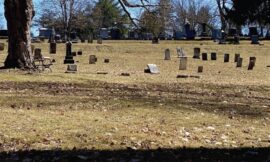
AfAm Burials Rhinebeck
Below: The story of Andrew Frazier, the ancestor. The only Black family with a large plot. Adjacent to and facing, but not technically within, “Colored Section E.” Below: Images and profiles.
Posted in: African Heritage, For everyone, Towns

Lafayette Gift to Brinckerhoffs
This is the story of ongoing work to confirm details of an oral tradition in Fishkill’s Brinckerhoff family of nearly 200 years. The tradition holds that Lafayette gave this desk as a gift during his 1824 tour. Recently discovered evidence tends to confirm that oral tradition. In 2013, with the 200th anniversary of Lafayette’s 1824 local visit approaching, the Fishill Historical Society and Dutchess County Historical Society collaborated to dig a little deeper to better understand what might have happened. Sandy Levy of Jenkinstown Antiques of South New Paltz provided the answer. He identified the piece as Haines & Holmes in New York City, circa 1825. Lafayette gave fine gifts, made and purchased locally, to important friends We know from the start of Lafayette’s arrival in New York in August of 1824, he was inclined to purchase a locally made item as a gift. Under the heading, “An Elegant Present” the newspaper reports, “General Lafayette, on Tuesday evening, very affectionately took leave of Captain Allvn, at his room, City Hotel, and at the same time presented him with a superb writing desk, (made by N. Smith Prentiss, of this city,) replete with everything necessary for a gentleman’s toilet, bearing this inscription, “General Lafayette to his excellent friend Captain Allyn, August 15th, 1824.” He also sent kind remembrances to such of the officers and crew of the Cadmus as remained on board, presenting to the chief mate, Mr. Daniel Chadwick, a beautiful case of mathematical instruments mounted in silver. The Cadmus sailed on Wednesday, for Havre.” The story as told by Fishkill Historical Society in 2003 From Fishkill Historical Society June 2023 NewsletterThe Van Wyck DispatchPresident’s Message Above: Patti and John “Brinckerhoff” Haslett – Lafayette Bureau Donors On May 18th, 2023, Patti and John “Brinckerhoff” Haslett stopped by the Homestead for a “Personalized Guided Tour.” Ten years ago, they generously donated the Lafayette Dresser to our Fishkill Historical Society. John “Brinckerhoff” Haslett is the nephew of Beverly & Todd Brinckerhoff who were long-time members of our Fishkill Historical Society, and owned the Brinckerhoff Homestead – the big white house up on the hill overlooking the junction of Routes 52 and 82. When they died in 2012, the house was sold – and is now the Brinckerhoff Inn Bed & Breakfast, and all of the furnishings in the home were sold at a local Auction in February 2013. Since Patti & John live in Virginia, he called me up a couple of days before the Auction, and said: “Don’t BID on the ‘Lafayette Dresser’ I’m going to buy it and DONATE IT to the Fishkill Historical Society in Memory of Beverly & Todd Brinckerhoff”, and, that’s exactly what he did. Now, ten years later, they were on vacation and stayed overnight at the Brinckerhoff Inn – his Aunt and Uncle’s historic house – (where Lafayette was very sick and convalesced for many weeks in October 1778) & then came to our Van Wyck Homestead: Historical Info: In September 1824, when Marquis de Lafayette came back to America for his “Grand Tour” of the United States, his ship docked at Newburgh on September 13th, while heading north, and then on September 19th, while heading south – back to New York City, his ship stopped at Fishkill Landing. At one of these stops, Lafayette had his personal Three-Drawer Dresser off-loaded and delivered to the Brinckerhoff Family here in Fishkill as a “Thank You” that their Parents / Grandparents had saved his life almost 50 years ago. It was an HEIRLOOM in the Brinckerhoff Home for 190 years, and Patti & John “Brinckerhoff” Haslett generously purchased it at the Auction & Donated IT to our Society! Steve Lynch, FHS President Fishkill’s Brinckerhoff House today. Above left: Steve Lynch, 2023. Above right: Steve Lynch and Joey Cavaccinni, 2003.
Posted in: For everyone

What did they see in Lafayette?
Why have so many admired Lafayette for so long? The Dutchess County Historical Society was honored to speak at this important Fishkill commemoration of Lafayette. We can learn so much about why he remains important by looking through the lens of local history. Lafayette earned the admiration of George Washington, and was honored by established, foundational orders like the Freemasons and Society of Cincinnati. But the historic, record turnout of crowds to welcome him during his 1824 to 1825 tour reflect the wide admiration held by a diverse group of American people, who placed their various hopes and dreams in him. Among them: working class Protestants, free and enslaved Blacks, Indigenous Peoples, women and American soldiers, generals and Congressmen across the 18th, 19th, 20th and 21st centuries. Understanding what they saw in Lafayette may suggest what we might want to understand as well. Bill Jeffway, August 2023Executive Director, Dutchess County Historical SocietyBicentennial Committee, American Friends of Lafayette A ceremony to honor the Marquis de Lafayette: celebrating 125 years of the Lafayette Monument in Fishkill On Sunday, August 27, 2023 at 11:00 a.m. a ceremony to honor of the Marquis de Lafayette, celebrating 125 years of the Lafayette Monument in Fishkill, took place at Rombout Rural Cemetery, 1571 Route 52, Fishkill, NY. The ceremony was hosted by the Town of Fishkill in partnership with the Rombout Rural Cemetery and the Melzingah Chapter, National Society of the Daughters of the American Revolution, featuring special guest M. Damien Laban, French Deputy Consul General in New York. Bill Jeffway’s remarks of August 27, 2023 begin here. September 19th of 2024 will mark the 200th anniversary of Revolutionary War Major General Lafayette’s visit to Fishkill, part of a late-in-life farewell tour that lasted 13 months and included all 24 States. The question is: should we recognize next year’s anniversary, and if so, why? Consider an answer, through the lens of local history…where we find that admiration for Lafayette transcends not just centuries, but social and economic class, faith, gender and race. He inspired not only George Washington, but Indigenous Peoples, free and enslaved Blacks, the working class, women, defenders of Irish Catholics, US soldiers, generals…and US Congressmen. Let me explain. In the nearby image of Daniel Nimham you have the face of Indigenous Peoples who fought for the American cause. Lafayette was known for earning the trust and engaging the Oneida during the war. They called him, great warrior, in their native language, as a sign of respect. In 1783 Fishkill’s Captain Comfort Ludington and wife Elizabeth named their newborn son, deLafayette Ludington. Forty-four years later, in 1827, Thomas and Jane Williams, a free Black couple in Union Vale named their newborn son Lafayette Williams. Lafayette Williams grew to serve, and die, in the Civil War in 1865, in the US Colored Troops. He is buried at the national cemetery in City Point, Virginia. In 1854, two decades after Lafayette’s death, Lafayette’s name was invoked by voices against, and in defense of — Catholic immigrant voices, when the well known historian, Jared Sparks with Hyde Park family ties, strongly asserted in national press that he knew from personal observation having lived with him for some time at his home, Lagrange, in France, that Lafayette was tolerant of all faiths. In 1914, Red Hook’s Victor Chapman joined what came to be called the Lafayette Escadrille, serving as a pilot in the early and emerging practice of armed airplanes at the outbreak of World War One. His untimely death in battle over Germany led to a eulogy at Lafayette’s grave in Paris on July 4th, 1916 – where Chapman’s name was specifically linked to Lafayette as representative of the “good feeling between the sister republics.” One year later – again at Lafayette’s grave in Paris – on July 4th, 1917 – US General Pershing and American troops rallied an American public skeptical of the recent US declaration of war on Germany – with the call that became the dominant theme in the war: “Lafayette we are here!” Poughkeepsie’s American Legion Post is today called the Lafayette Post, founded and named by C. Fred Close upon his return from service in France in World War One. In September of 1918, women seeking a national right to vote assembled at Lafayette’s statue in Lafayette Square across from the White House and got national attention saying, “Lafayette, we are here! We, the women of the United States, denied the liberty which you helped to gain, and for which we have asked in vain for sixty years, turn to you to plead for us. Speak, Lafayette!” … By 1920 the amendment was adopted. In 1958, local Congressman Hamilton Fish created and led the Order of Lafayette, to recognize those who served as officers in France – in either the First or Second World War. For all the big plays on the global stage, as a man of two worlds, of both the American and French revolutions, I believe what makes Lafayette distinct is his lifelong, persistent, intimate gestures: a tip of a hat, a bow of respect, a hand shake, penning a letter of support, a gift as remembrance. He kissed the hand of Marie Antoinette and calmed an angry crowd, at least for a time. Lewis Hayden credits his transition from enslaved Kentucky boy – to becoming a leading national abolitionist – to the recognition Lafayette bestowed on Hayden during his national tour. Here in Fishkill, we find among the most beautiful examples of these intimate gestures, the desk Lafayette gave to the Brinkerhoff family during his 1824 visit, to thank them for nursing him from near death in October of 1778. You can see it exhibited at the Van Wyck Homestead and Museum on weekends. I highly recommend it. I am recently involved with the American Friends of Lafayette, a historical and patriotic organization dedicated to the memory of Lafayette in the United States and France, and we are in the beginning stages of developing plans for the bicentennial. Please
Posted in: For everyone

Guide to the Study of Local Black History
Starting Places People Places Things Words from the past Newer Perspectives Other Starting Points The Walter M. Patrice Collection focuses largely on the history of the Smith AME Zion Church in Poughkeepsie, which through Mr. Patrice’s efforts was listed on the national historic register. Although unable to part with the photo album, Mr. Patrice allowed DCHS to take photographs and use the images from his mother’s family’s photo album. In most cases, his mother was not able to identify specific individuals (aside from her father, Jasper Jackson) but she confirmed that it is the family album of Henry and Alma Jackson of the Town of Milan. Below right are some striking images by Reuben Van Vlack of men preparing to serve in World War One in 1918.
Posted in: African Heritage, For everyone
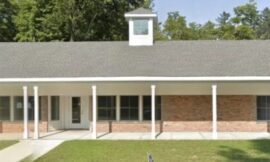
Home
Dutchess County Historical Society Preserving Dutchess County’s Heritage for Generations to Come At the Dutchess County Historical Society, we bring our community together through the stories, artifacts, and traditions that shape who we are. By preserving our shared history and making it accessible to all, we inspire pride, connection, and a deeper understanding of the past, present, and future of Dutchess County. “The things that we can see and touch awaken the imagination. Local history touches off these things that have happened on the spot; and the facts of local history become parts of a person’s own life to an extent which is rare with scenes and incidents one has taken solely out of books and secondhand accounts.” Historian and philosopher, Louis Mumford, speaking to the DCHS membership at the Amenia estate of Joel and Amy Spingarn in September of 1926. 2025 Historic Preservation & Awards CelebrationJune 1, 2025 – tickets now available Discover Dutchess County History Need assistance with your historical research? Email us in advance to schedule an appointment. Resources can be checked in advance of your appointment. Our facility is -staffed Wednesday – Saturday 10 AM to 3 PM. Email us with any questions!
Posted in: For everyone
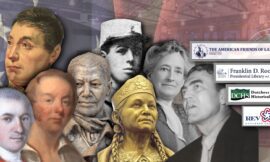
1824: Lafayette in Dutchess County
Big Moves & Intimate Gestures. Why Lafayette’s approach to equality has meant so much to so many. Below is a continually evolving concept that looks at Lafayette through the hearts & minds of those in his 1824 diverse, record-size audiences (and later audiences well into the 20th century) who were at greatly varying degrees of success in realizing the American promise of equality. An in-depth look here: Click full screen icon bottom-left for best view A quick summary below: September 16, 2024 will mark the 200th anniversary of Lafayette’s visit to Dutchess County’s Poughkeepsie and Staatsburg — and Columbia County’s Clermont and Hudson. September 19 will mark the same anniversary for his visit to Red Hook and Fishkill Landing. Part of a 13-month tour of all 24 states, he was the “nation’s guest” at the instigation of President James Monroe, at the invitation of Congress. They sought to rally and unify the country as it approached its 50th anniversary: July 4, 1826. Monroe’s sense that time was running out was prescient. Both John Adams and Thomas Jefferson died on that day. Monroe died July 4, 1831. Lafayette died in 1834 in France. Called a man of two worlds because of his role in the 1776 American Revolution and the French Revolution at the end of the following decade, he was only 19 years old when Congress made him a Major General. In addition to citations for bravery and effectiveness in the military, he contributed his personal wealth, and persuaded the King of France to formally and actively support the American cause. Green indicates public events. Blue indicates private visits. A firm commitment to truth. Big moves & intimate gestures. Toward the end of his life, Lafayette called for a strict adherence to truth. He said that moderation is not the average between two points, but a firm grip of the truth. “When it is said that four and four make eight and an extravagant person pretends that it makes 10, is it more reasonable to maintain that four and four make nine? No, true moderation is discovering what is true, and firmly abiding by it.” Nowhere is this more evident than his views and actions and commitment the idea that all are created equal. To Lafayette, all meant all. In Lafayette we find a very distinct combination of big moves, such gaining the support of France in the American cause, or his own personal support of the same, and small gestures, like kissing the hand of Marie Antionette to calm an angry crowd, or the tip of his hat to an enslaved Kentucky boy (Lewis Hayden shown above) who said that inspired him to become the nationally known abolitionist that he was. American Indians. Big moves: Lafayette assisted the Oneida Nation, America’s ally during the Revolution, with fortifications of their settlement and persuaded them to send 47 of their soldiers to join the Continental Army. They gave him the name Kayewla, or Great Warrior. Small gesturees: Not seeing any Oneida on his June 10, 1825 visit to Utica, a former Oneida stronghold, Lafayette asked his hosts about them, surprising them with the request. When the Oneida came, they had a private audience with Lafayette that he had not granted others. Free and enslaved Blacks: Big moves: Lafayette enlisted James Armistead, an enslaved man in Virginia who had earned a temporary reprieve from his owner, to became an invaluable double-agent spy, infiltrating the highest levels of the British military. Small gestures: but was returned to being enslaved at the end of the war and was denied a pension for lacking a combat role. Lafayette successfully personally petitioned congress on both accounts. White working-class and poor: Big moves: There is less of a direct connection, but an important one nonetheless. For much of his tour, Lafayette travelled with a close friend, Frances “Fanny” Wright. Within a few years, she be so aligned to the Working Men’s Party that the party became known as the Fanny Wright party, and its candidates Fanny Wright men. Small gestures: The Poughkeepsie Telegraph reported that at Forbus house, “We observed among [the crowd] an old revolutionary soldier bearing the marks of poverty and hardship, but whom the general recognized. And it was gratifying to see with what cordiality they shook hands. The old soldier was obliged to yield to the pressure of the crowd and passed off with his eyes sparkling and his countenance lighted up, and was evidently inspired with a new glow of life.” Fanny Wright became close to Lafayette immediately upon meeting him in France in 1821. She travelled with him on a good portion of his 1824/1825 tour including a stay with Jefferson at Monticello. She went on to become associated with the Workingmen’s Party. Lafayette penned a successful letter of support in James Armistead’s request for freedom, which had prior been denied. When Lafayette arrived in Utica in 1825, he insisted the Oneida be invited, who he granted. aprivate audience.
Posted in: 18th Century, For everyone, Veterans
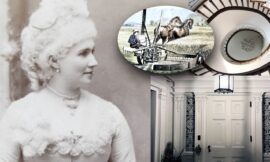
Collins Estate
Layers of Dutchess County History are Exposed in a Rare Personal Setting By Bill Jeffway A version of this article appeared in the May 17, 2023 issue of the Northern/Southern Dutchess News. A rare weaving together of the varied and rich threads of Dutchess County history will come together at the historic 1840 Collins Estate, a private home in Union Vale, on Saturday, June 3rd. While the main purpose of the event focuses on the three traditional DCHS Awards for 2023, the site, and the site’s family history, is extraordinary in and of itself. A direct descendant of the Collins family that built the home, Fredrika Simpson Groff, will attend with two daughters from her home in Colorado. Groff is central to the cohesiveness of the varied and intricate threads that reveal our county’s distinct history. Her careful distribution of items among the Dutchess County Historical Society, the Adriance Memorial Library, the Loeb at Vassar College, and the current owners and stewards of the home, Frank and Jennifer Castella, is a model of historic preservation. This preservation involves the home, family histories and genealogy, and objects that range from fine art to photographs and diaries to furniture. The builder of the home was George Collins (1788-1848) and wife Elizabeth Borden Collins (1795-1865). One of the interesting dynamics of the story is the tension caused by the Quaker insistence on simplicity while the couple and their descendants became increasingly successful in business and society. Click full screen icon bottom right to view as published: A family fascination with growing things, and manufacturing things, is reflected in a diary entry of Fredrika Groff’s grandmother, Elizabeth Borden Campbell (DCHS Collections). When she attended the US Centennial Exhibition in Philadelphia she spent the first day in the Horticultural Hall and Machinery Hall. On Friday, June 16, 1876, she wrote, “One large machine runs all the machinery in the building,” and goes on to list all the things she saw, like silk wallpaper, “made entirely by machinery.” A respect for the integrity and importance of agriculture, while developing and embracing revolutionary technologies, is a major thread in the family story. Campbell’s husband, Albert Adriance Simpson, was a descendant of the well-known Adriance family. Elizabeth Borden Campbell’s sister, Ada, also married into the Adriance family. She married Isaac Reynolds Adriance who was involved in the Adriance, Platt & Co. and Moline Plow Company that at one time employed 1,500 people in Poughkeepsie. We may underestimate today how profound an impact a new type of farm plow could have. Adriance led the effort among his siblings to create Adriance Memorial Library. The Loeb will have on display for the month of June, the portrait by Rembrandt Peale of Elizabeth Borden Collins, the first resident of the house. It was a gift of Fredrika Groff. That portrait, along with its companion of husband George Collins, also by Peale, will be featured as reproductions at the June 3rd event. The Awards DCHS will carry on its longstanding tradition of given awards to both recognize and encourage best practice in support of local history in historic study, engagement of the broader community, and in business. The DCHS Business of Historic Distinction Award is given for a longstanding tradition of service & commitment to Dutchess County residents. The 2023 Award goes to the Dutchess County Regional Chamber of Commerce. Frank Castella, Jr., President & CEO accepting. Today’s Dutchess County Regional Chamber of Commerce traces its roots to the 1907 Poughkeepsie-based Chamber. Whether taking a leading, visible role, or working behind the scenes, the Chamber has been a champion and advocate for small and large business. Constant changes in technologies, customer needs, and fluctuating economic climates make this a constant need. The DCHS Dutchess Award is given for exceptional contributions to the community in preservation, history & education. The 2023 Award goes to The Frances Lehman Loeb Art Center at Vassar College, Bart Thurber, Director, accepting. The very deliberate, thoughtful, and evolving collaboration between the team at the Frances Lehman Loeb Art Center at Vassar College under the leadership of Bart Thurber — and DCHS — has allowed both organizations to expand what they offer to constituents. DCHS’s major exhibition of the life and works of Caroline Morgan Clowes benefited from both material support and important counsel. We are pleased that four of Clowes’s paintings are on exhibition at the Loeb through an extended loan agreement. The DCHS Helen Wilkinson Reynolds Award goes to an individual or organization that has demonstrated a commitment to the necessary and accurate pursuit of historical truth embodied by DCHS founder Helen Wilkinson Reynolds. The 2023 Award goes to Local History & Genealogy Team & Rooms, Adriance Memorial Library, Tom Lawrence, Director, Poughkeepsie Public Library District accepting. Located on the main floor, the team has grown in size and skills. In addition to classic archives there is a growing range of interpretation through programs, blogs and social media postings that tell a wide range of local stories. Due to the generosity of our hosts, DCHS will benefit fully from the ticket price. In addition to the celebration of the best practices in preservation, and our enjoyment of the fruits of that careful stewardship and preservation, this is equally a request to support DCHS’s ongoing work. Information at www.dchsny.org or call 845-293-7711. Use full screen icon bottom right for best viewing. Use “-/+” to zoom in and out We are grateful to the extended family for the information related to the history of this extraordinary, multi-generational family that shaped Dutchess County so profoundly and positively. The family’s consistent vigilance in preserving narratives, images and important items that relate to the family, help us feel an intimate connection to the past.
Posted in: For everyone
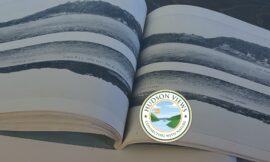
Spotlight: Hudson River
A message from Hudson Views: Hudson Highland Tours, LLC, known as Hudson Views, is pleased to sponsor this ongoing “spotlight” from the Dutchess County Historical Society featuring the beauty of the Hudson River. The strategic role of the Hudson River during the Revolutionary War prompted George Washington to call it the key to the North American continent. There is no stronger testimony to the river’s breadth, scale and beauty than it’s lending its name to the founding school of art in the emerging United States: the Hudson River School of painting. Hudson Views provides unique private boat charters throughout the Hudson Highlands and surrounding areas on the Hudson River so guests can explore and enjoy the rich beauty and history of the Hudson River and the works of art by the Nature Painters known as the Hudson River School. Contact Rob Doyle at These “panoramic” books often allowed the steamboat rider to flip between the east and west view at any given point.
Posted in: For everyone

DCHS Horizons
DCHS Horizons:Seeing the threads that connect the present to the past helps us create a better future. Whether we look sequentially back across a long trail (as with the path to women’s right to vote), or look forward to anniversaries of national events through the lens of local history (as with Black history relative to our country’s founding), DCHS Horizons aims to use the lens of local history to help us see where we are in the continuum of past, present and future. We believe local history has a profound relevance and value. One of our most passionate and eloquent advocates was Lewis Mumford, who spoke about the topic at a DCHS membership meeting at Troutbeck in 1926. He argued that understanding local history brings the lessons of what might otherwise be a more theoretical and remote history to life.
Posted in: For everyone

Horizons: Women’s Right to Vote
2023 November 7, 2023Election Day How did I get here? Lorem ipsum dolor sit amet, consectetur adipisicing elit. Minima incidunt voluptates nemo. 1919National Women's Suffrage National Women's Suffrage Lorem ipsum dolor sit amet, consectetur adipisicing elit. Minima incidunt voluptates nemo. 1917 1917Women can vote in any election, and be a candidate in, a man can vote in 1917 Women in New York State can vote equally as a man Lorem ipsum dolor sit amet, consectetur adipisicing elit. Minima incidunt voluptates nemo. 1880Women can vote and be candidates in School elections (only) in New York State 1880 Lorem ipsum dolor sit amet, consectetur adipisicing elit. Minima incidunt voluptates nemo. 1848Seneca Falls Convention Timeline Story The path between the 1848 Seneca Falls Convention and the women’s right to vote nationally was so long that it involved two very distinct generations. Dutchess County contributed many important men and women who were Quakers such as Lucretia Mott was first a student and then a teacher at the Nine Partners Boarding School in Millbrook. Fighting not just as a matter of principle of equal treatment and opportunity, the women of the early 20th century had reforms they wanted to vote in. Show is Laura Wylie (right photo, left) and her partner Getrude Buck, both of whom were active for suffrage. With the victory in 1917 Wylie switched from being head of the local suffrage league to being head of what became the Women’s City & County Club, an activist group fighting for changes in laws to improve the condition of women and children.
Posted in: For everyone
